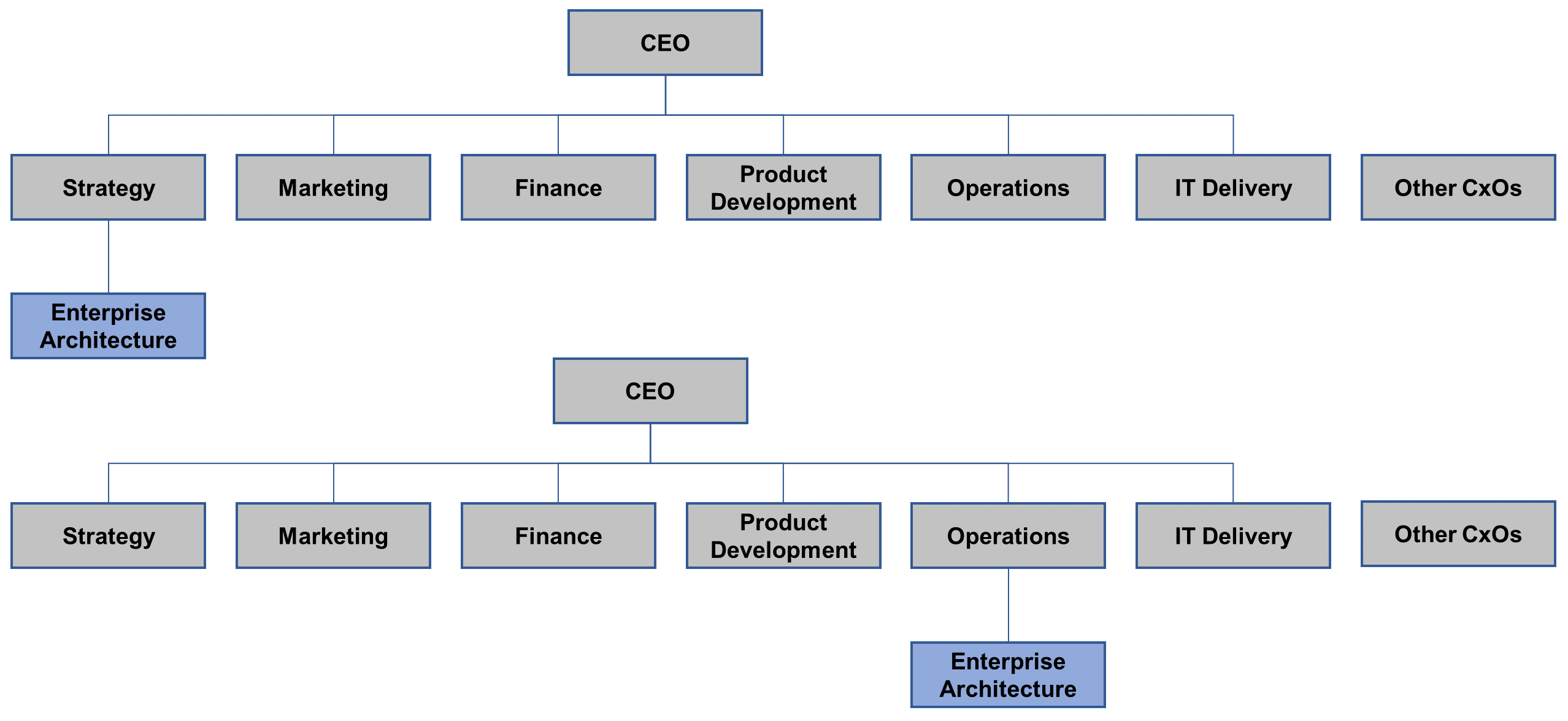Establishing an Enterprise Architecture Team
This chapter describes the guidance provided in the TOGAF Standard to support the establishment of an Enterprise Architecture team.
Documentation
| Document | Summary |
|---|---|
TOGAF Series Guide: The TOGAF Leader’s Guide to Establishing and Evolving an EA Capability |
This document is written for the EA Capability Leader, the person who is tasked to lead the effort to establish or evolve an EA Capability. It presents advice on establishing an EA Capability that aligns to a set of requirements and expectations that are specific to each enterprise. It proposes an approach for the standing-up and enhancement of an enterprise’s EA Capability based upon established best practices. This approach follows a configured path through the TOGAF ADM. |
Enterprise Architecture Capability
An Enterprise Architecture Capability is the ability to develop, use, and maintain the architecture of a particular enterprise, and use the architecture to govern change.
The term “capability” is defined differently by different practitioners, most commonly when it is used as part of a formal analysis technique when the definition must be precise and constrained. The term EA Capability is used as a management concept that facilitates planning improvements in the ability to do something that leads to enhanced outcomes enabled by the capability.
While every organization can benefit from an EA Capability, each organization will require a different EA Capability.
Typically, there are four broad purposes of an EA Capability, as shown in Figure 1 and described in Purposes of Enterprise Architecture.
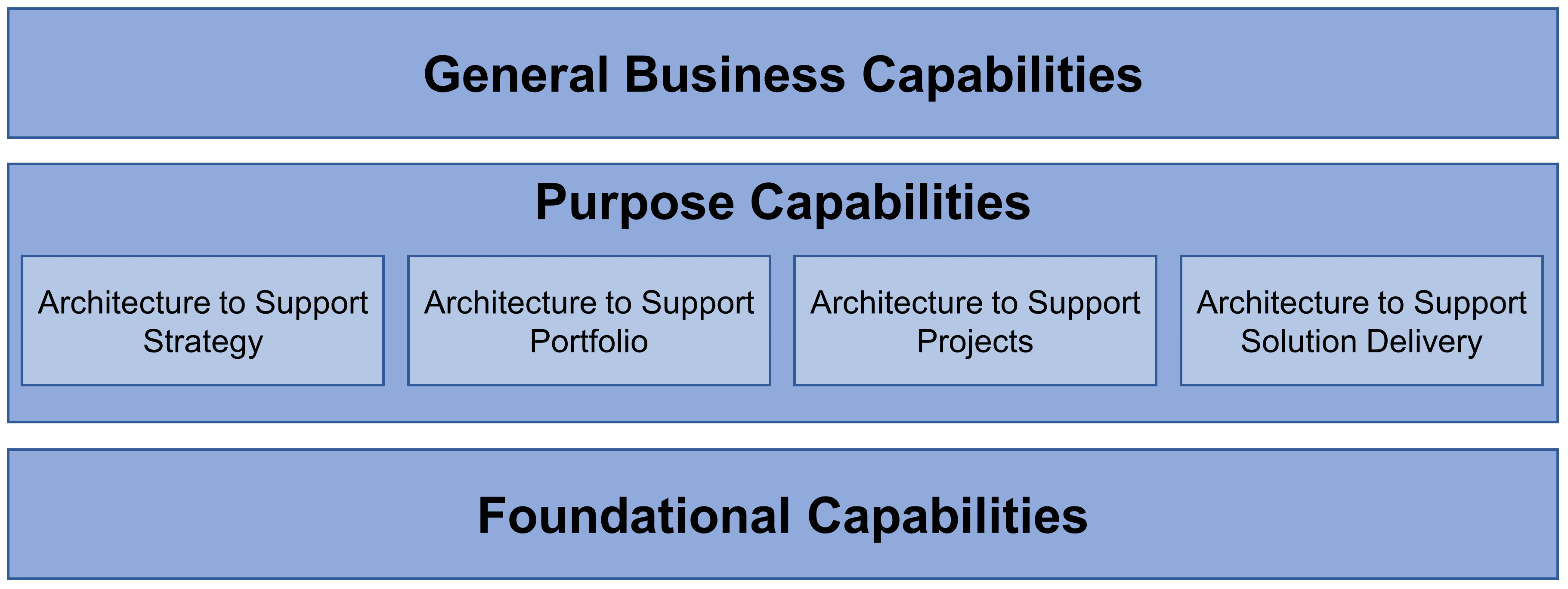
The EA Capability must run efficiently, effectively, and in line with changing operational and financial practices. It is conceptually similar to operating any function in the organization. It consists of Enterprise Architecture-specific activities and activities that are general to any business.
Enterprise Architecture-specific activities are either foundational or purpose-specific, as shown in a decomposition of the EA Capability model in Figure 2. The nature of the work done by the team providing the EA Capability invariably places them as a shared function. The team needs continuous input from impacted teams on relevance, efficiency, effectiveness, and growth – it is imperative to have common foundational elements of the EA Capability.
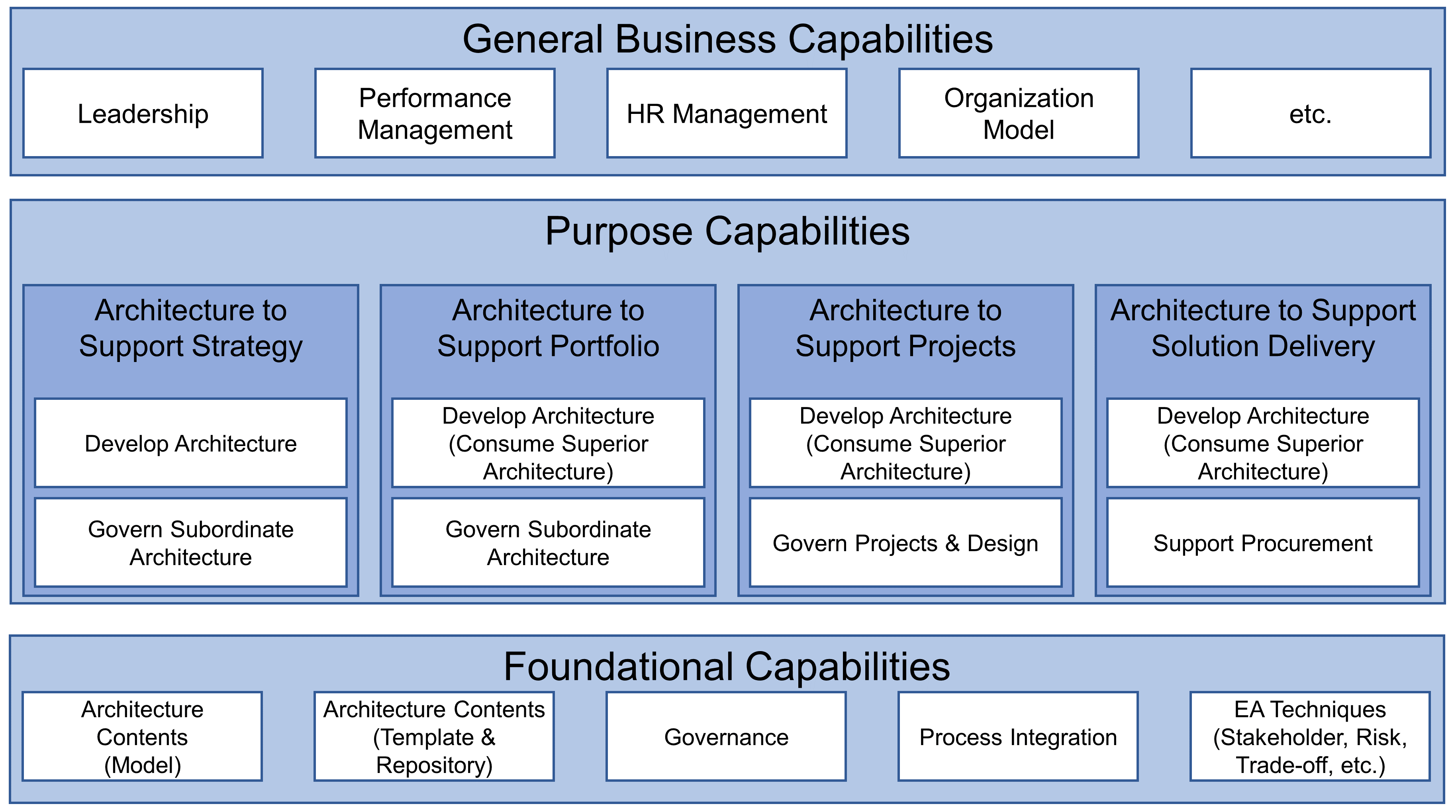
Organization Models
The following figures show some of the variants of organizational alignment of a team providing the EA Capability. They are used to convey an idea and do not account for differences that an enterprise might have, like industry, customer segment, product lines, country, and geography.
In a function-centric model (see Figure 3), it is possible that Enterprise Architecture is part of each of the functional verticals and one of the teams consolidates all Enterprise Architecture activities, as shown in the top of Figure 3. Another variant is that Enterprise Architecture could be part of the dominant or key function of the enterprise, as shown in the lower part of Figure 3. In this variant, it may be prudent to draw members of the team providing the EA Capability from each of the functional units having extended responsibility for a common goal, from an HR management perspective, and report to respective functional or regional business leaders.
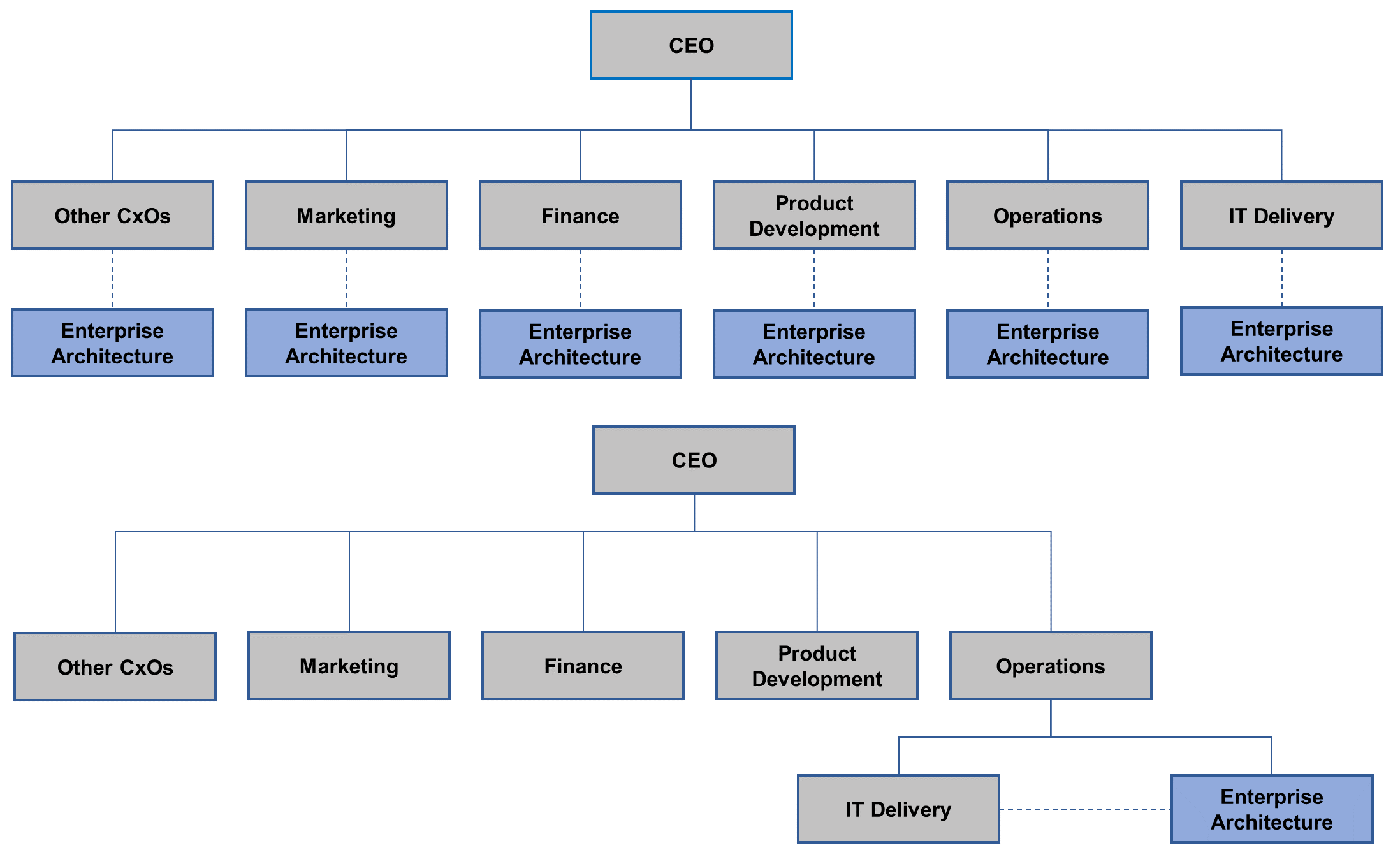
In an IT-centric model (see Figure 4), Enterprise Architecture is normally aligned to the IT organization, irrespective of how it is named. The charter for the team may vary depending upon how IT is structured within the organization. When IT is aligned to the CFO, the charter for the Enterprise Architecture team may be driving operational efficiency and cost control. When IT is aligned to delivery or marketing, the charter is more likely to focus on agility and efficiency. It is important to understand the context and draw members with process analysis and cost management expertise or a deep functional knowledge of operations.
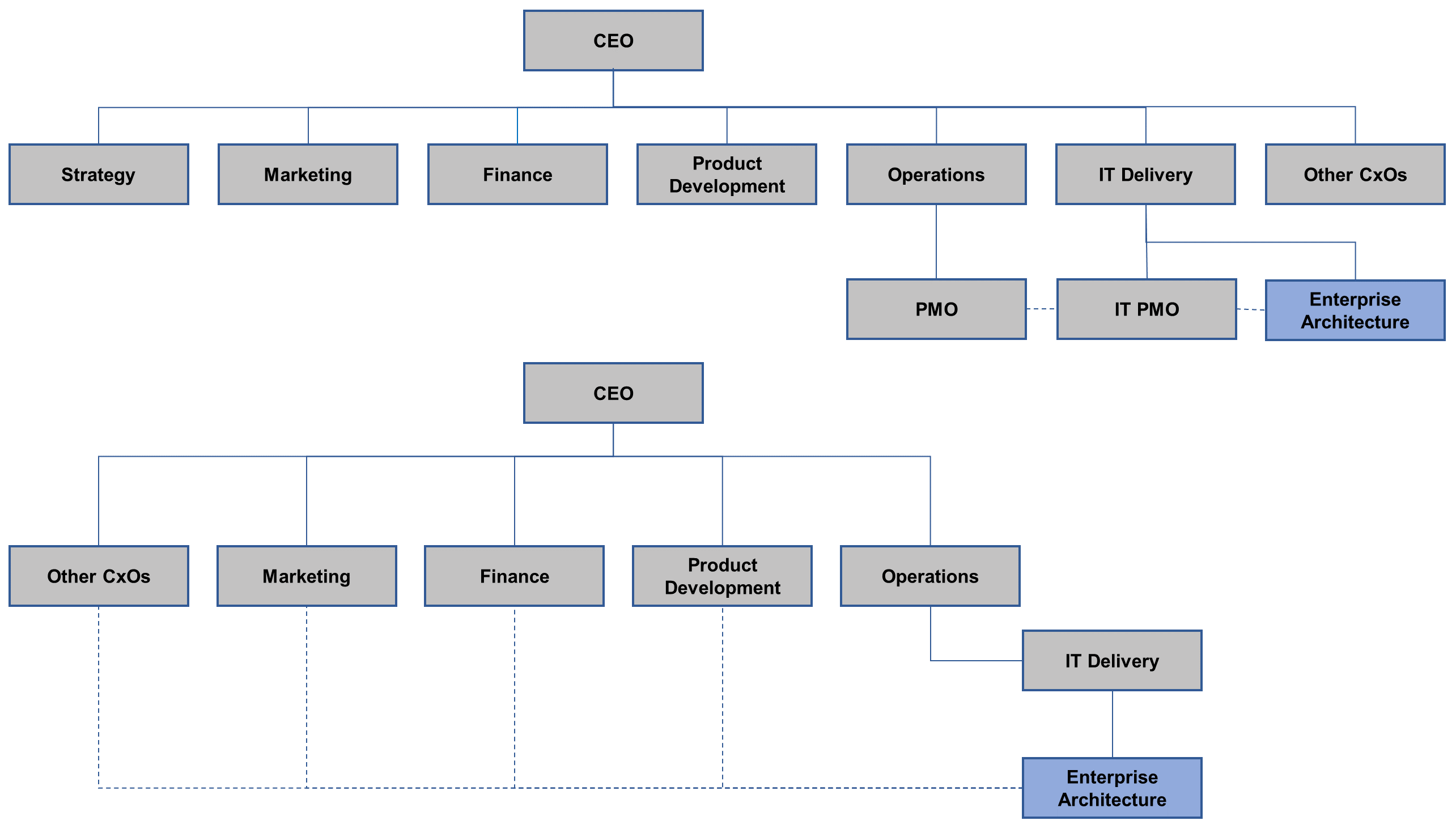
In a strategy-centric model (see Figure 5), Enterprise Architecture can be aligned with corporate strategy, overall operations, or finance. The team providing the EA Capability extends its services to the rest of the enterprise based on the charter (sustained growth, operational efficiency, cost and risk reduction).
